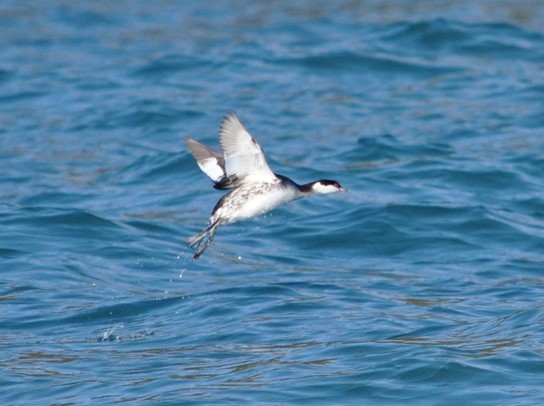© Beth Clark
Seabird Species
Sea ducks & Allies
Breeding from cliffs to coasts, these smaller seabirds still migrate far and wide.
There are 30 seabird species within this group (ducks, divers and grebes), all of which are distributed at coastal waters. Most of these species are found in the northern hemisphere at high latitudes, but some species, such as the White-headed Steamerduck, have distributions in the Southern Hemisphere.
Many sea ducks are threatened by becoming entangled in gillnets, but new technology can help to reduce this (Rouxel et al. 2010).
Sea ducks include scoters, eiders, sawbills and steamerducks. Sawbills are piscivorous (fish-eating) diving ducks and have specialised serrated bills that help grip prey. Eiders and scoters dive to the seafloor to catch molluscs or crustaceans. Grebes and divers generally eat fish and other small aquatic animals. Unlike many seabirds, these species leave the nest soon are hatching and some even ride on the backs of their parents.
In The Seabird Tracking Database:
Spotlight species: Horned Grebe
The Horned Grebe (Podiceps auritus) is a small waterbird characterised by its horn-like feathers, which it uses to attract mates. The species is made up of two subspecies located Northern Eurasia and North America respectively. In the summer, this migratory species breeds on wetland habitats, where it builds a nest of aquatic vegetation in which it lays a single clutch of eggs. This grebe migrates in winter to inshore coastal waters, or sometimes in large lakes/rivers. This species is listed as Vulnerable by the IUCN due to its breeding range lying primarily within areas used for forestry – a process which, alongside climate change, is resulting in hydrological changes that reduce habitat quality.
Please view this page on a desktop computer to see our interactive species colony map.
Tracked colonies of Sea ducks & Allies
Use the map below to explore seabird colonies around the world.
Thanks to our data contributor: Steffen Oppel
